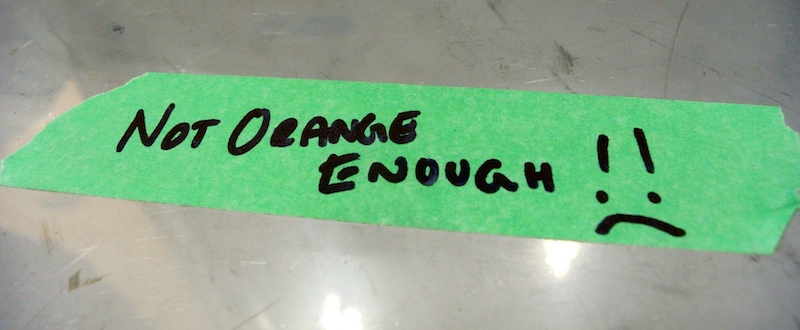
By Rick VanSickle
If you had to categorize the best wines that Vineland Estate winemaker Brian Schmidt makes, it would be this: Clean, fresh, expressive wines that showcase the terroir of the Twenty Mile Bench and more specifically, the estate’s own vineyards — St. Urban and Bo-Teek.
Ever since I have known Schmidt and tasted his wines he has been all about squeaky clean in the winemaking process from harvesting the grapes to bottling. You can eat a hearty meal off the floor of his winery or the cab of his tractor any day of the week. He demands strict winemaking protocols from himself and everyone who works in the winery or you don’t work there. It’s pretty simple.
So, you understand the shock a year ago when he presented a skin-fermented white wine made from Chardonnay Musque. A wine more commonly referred to as “orange” or “amber”, a wine most would expect to be as “natural” a wine as you can make with little in the way of intervention.
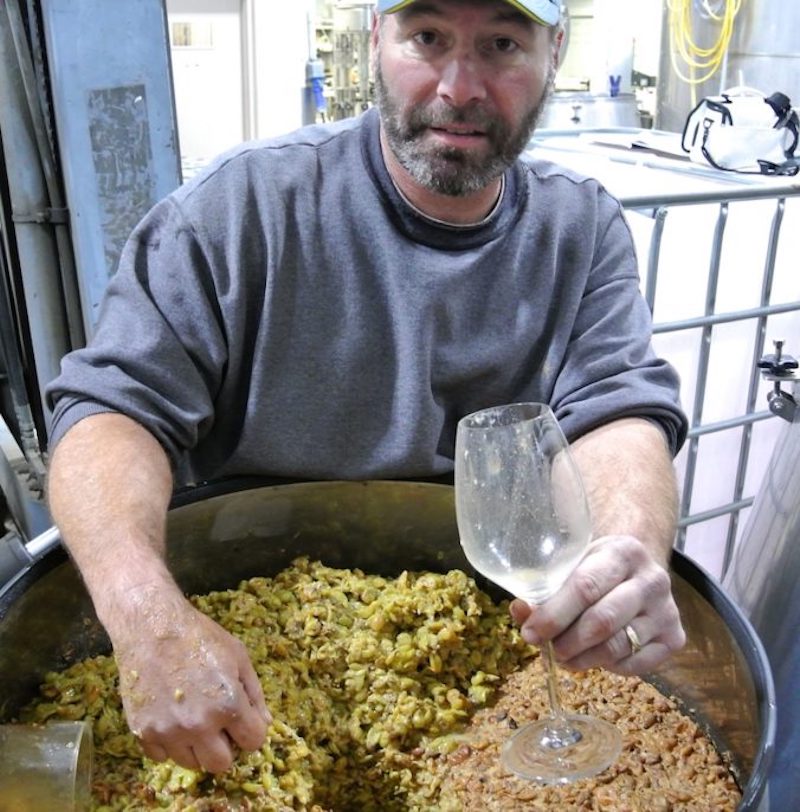
Now, I am in no way calling an orange wine anything but clean, if the winemaker is extremely careful, but there are more risks when oxygen plays a role in the process and sulphur is used sparingly or if at all to stabilize the finished wine. The idea that you even present a risk of something going terribly wrong would keep Schmidt up at nights.
He lived through the first orange effort with enough success that Schmidt decided to give it another go, this time with Riesling from St. Urban, and this time pushing the limits of how long he could keep the wine percolating on the skins.
As it turns out, it was a very long time — one batch for 108 days and the second for an incredible 212 days.
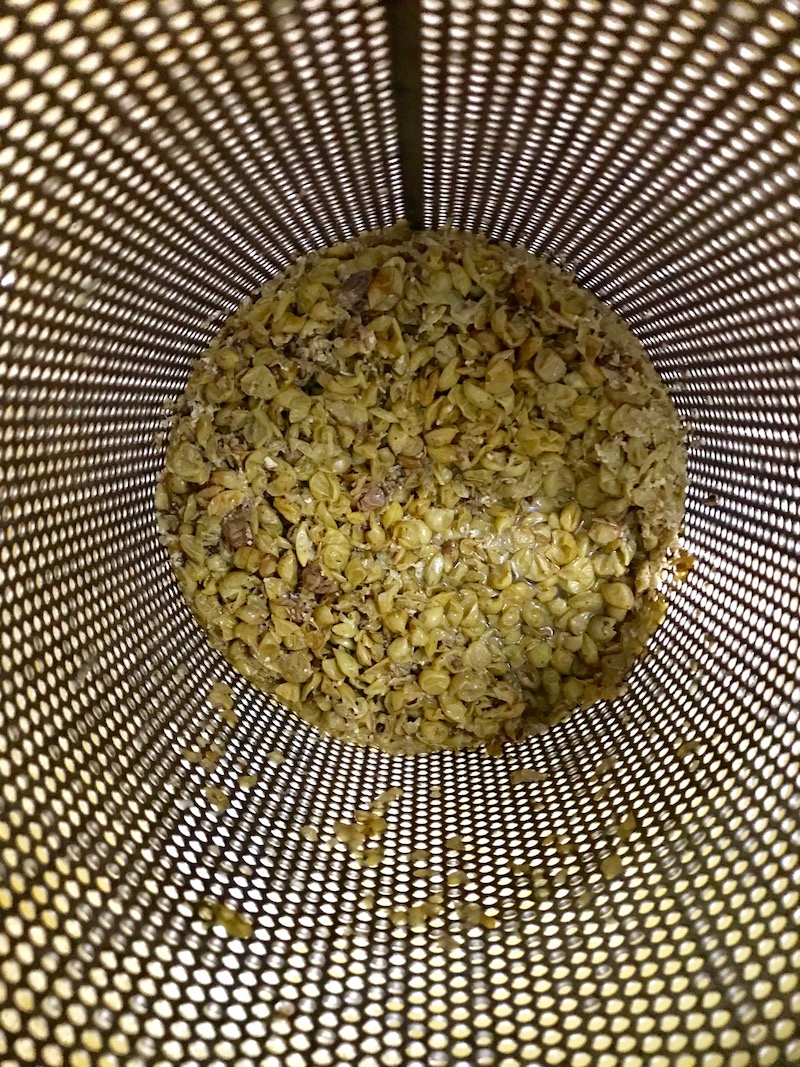
In its infancy, when I first encountered Schmidt’s second “orange” wine last November just after harvest, the tank holding the Riesling was a mass of gooey gunk with a hard surface cap that gave way to a sloppy, porridge-like core of quickly decaying Riesling grapes.
Schmidt used late-picked Riesling from his beloved St. Urban Vineyard that he let ferment on the skins under a hardened oxidized top layer of grapes.
Back in November, as Schmidt dug through the upper crust of the Riesling for the first time, I asked him what he was doing (because I had no clue what the hell he was doing!)
“Digging for gold, Rick … digging for orange.”
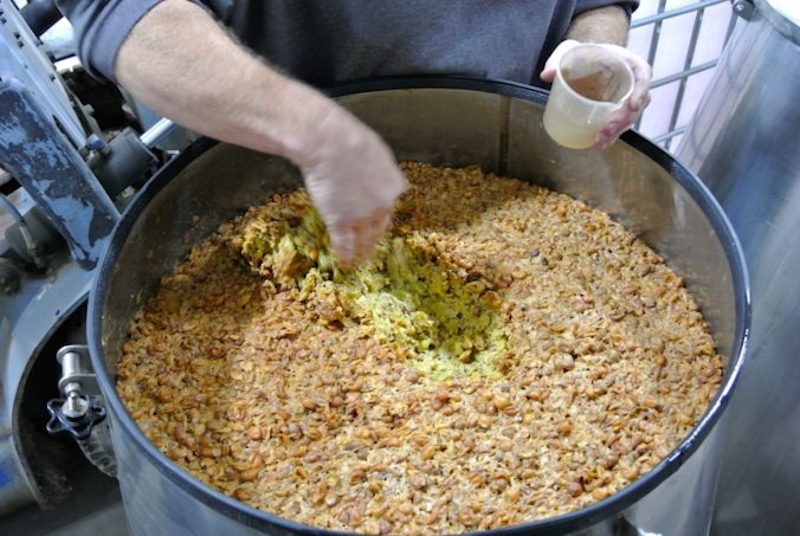
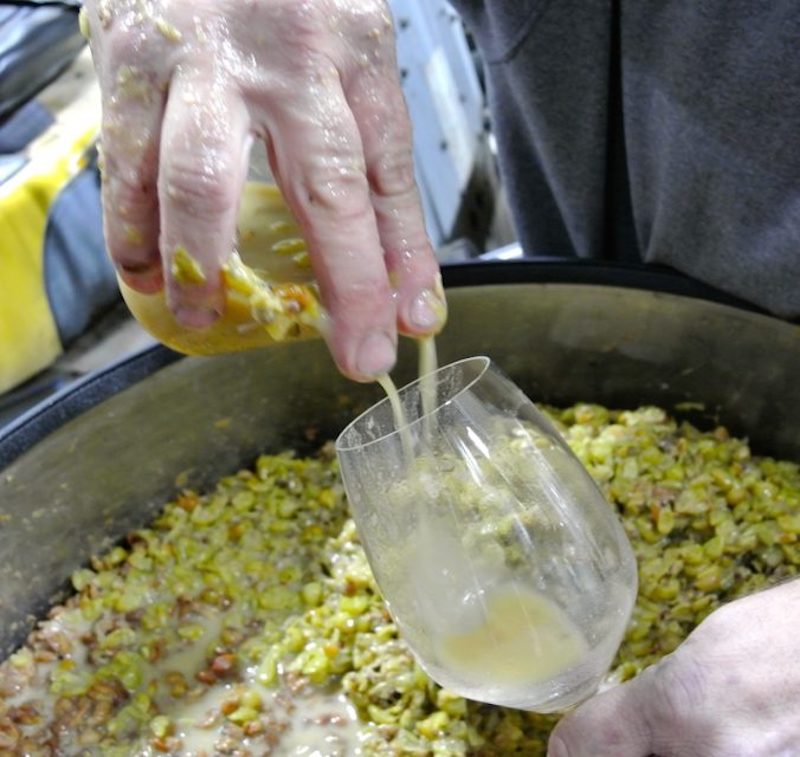
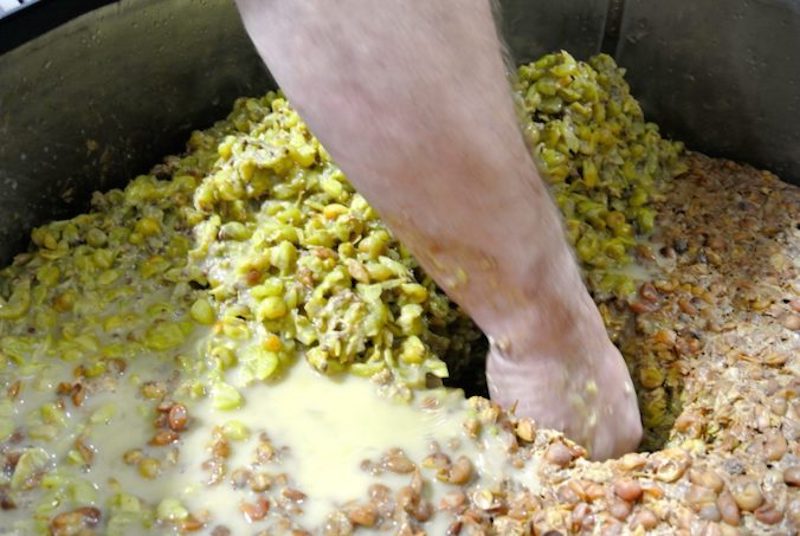
As we tasted it back then, with the consistency (and look!) of pea soup at that stage, it was shockingly delicious with sweet and creamy fruit driving the profile and fierce acidity keeping it fresh and lively.
Fast forward to February of this year, and another trip to check in on Schmidt’s orange project. He had removed the “cap” to eliminate any potential VA. The new cap would eventually sink to the bottom of the tanks where the orange wine will (presumably) get its orangy colour from, and obviously pick up more complexity and personality.
Schmidt’s original goal was to let the wine soak on the skins for 100 days, but 80 days in or so, he said he just might push it past 100 days. That’s pretty extreme. But after tasting the wine in February, which was really tasty then, it certainly had the potential to evolve into something really special and unique.
Between February and June, Schmidt made the decision to split the orange wine into two. The first wine, he removed from the skins after 108 days and let simmer in a separate tank in the winery.
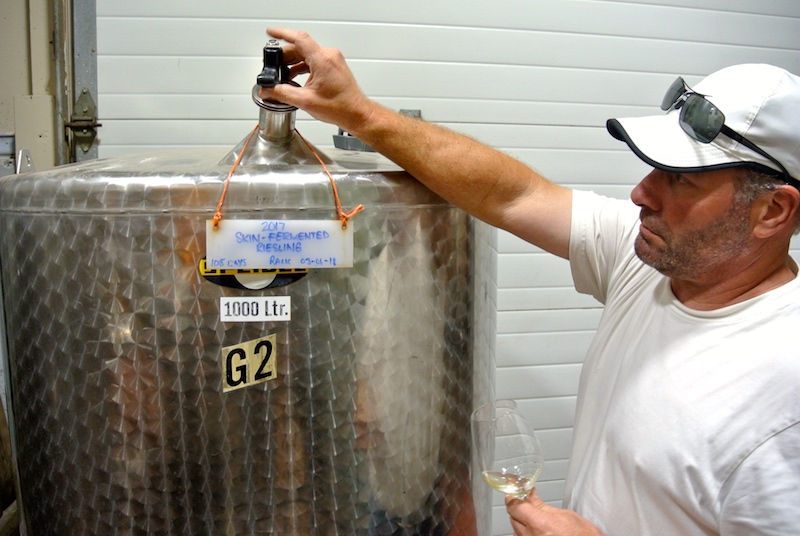
Then, on June 8, after 212 days, Schmidt finally made the big call to take his skin-contact (skin fermented) Riesling off the skins. I made my way up to the winery with my daughter Tabria along for the ride a few days later to check on both versions of the Riesling.
Surprisingly, the 108-day St. Urban had more reductive notes than the 212-day wine, with a penetraing nose of lime, grapefruit, bin apples and minerals to go with rousing acidity.
The oddest thing of all? It’s not very orange for an orange wine, or as Schmidt has playfully labelled it on the tank: “Not Orange Enough L”
Even the 212-day Riesling has a colour issue. “It’s not twice as orange,” laments Schmidt, who admits even another 200 days would not do much to turn the wine into an orange colour.
Which, of course, is not the point or even meaning of “orange” wine. Colour depends on varietal, for the most part, and orange wine is a style of skin-fermented, skin-contact white wine with little or no intervention in the winemaking process — the key isn’t that it’s orange.
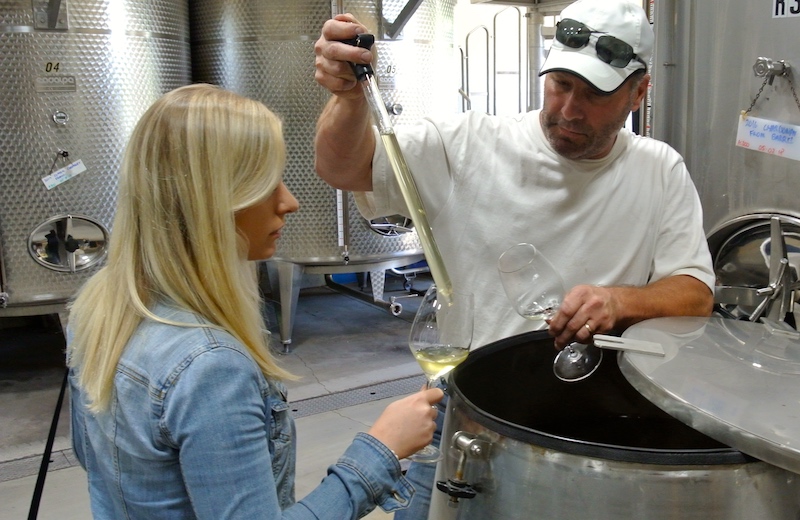
Tasting the 212-day version of Schmidt’s Not So Orange wine, it was really nice with expressive and savoury stone fruits, lemon, really subtle reductive notes, herbs and minerals. Even though it spent much longer on the skins, it smelled and tasted fresher than the 108-day version with good flavours, a cleaner profile with depth and complexity.
Schmidt does not know how he will blend the two or even IF he will blend the two versions of his orange wine. He says he will likely filter it and might add a small amount of sulphur at bottling to preserve freshness and get it out on the shelves.
For Schmidt, it’s not about having an “orange” wine on the shelves (in fact, it does not sell that well), it’s about the journey.
“What can we learn along the way?” he says. It’s opened my eyes on how we make Riesling in general.”
While he calls making this wine naturally an “interesting exercise” he doesn’t have an answer to the question he most wanted answered:
“Can Mother Nature do it better than we can?”
It’s a debate that won’t be settled any time soon.
While we were at Vineland Estate, Schmidt, always interested in what consumers think of Vineland Estate’s wines, challenged my daughter Tabria VanSickle to taste and write a review for the Vineland Estate regular cuvee Cabernet Franc. This is the review, the first one she has written (and without editing or help).

The Vineland Estates Cabernet Franc is a 2016 vintage and sits at $14.95 a bottle. This was a great vintage year in Niagara for reds. It is a deep purple, dark, brick red colour in the clear glass and smells of pepper and fruity notes such as blackberry and plum. There is a delicate aroma of herb spices such as bay leaves and hot peppers. The first sip was nicely acidic and balanced, with the strong taste of bell pepper and dried fruit notes. There are some pomegranate and baking spice notes as well. I believe this wine tasted a lot smoother after letting it sit in the glass and this is why I would like to decant it to see the difference. The finish is dry, smooth and lingering. The acidity in this Cabernet Franc makes for a very vibrant and fresh red wine. This wine is a medium body almost the same kind of body as a Pinot Noir. It is a beautiful wine; very fruit-forward therefore great for the summer.
Lieutenant Governor’s Awards
for Excellence in Ontario Wines
The Lieutenant Governor presided over the presentation of the Lieutenant Governor’s Award for Excellence in Ontario Wines.
The awards are administered by the Ontario Wine Awards with the support of the Grape Growers of Ontario, the Winery and Grower Alliance of Ontario, and the Wine Marketing Association of Ontario. Drawing upon its expertise, the Ontario Wine Awards selects the judging panel, which includes student judges from Canadian Food and Wine Institute at Niagara College.
2018 winning wines
• 13th Street Winery Premier Cuvée 2012
• Trius Winery Showcase Ghost Creek Riesling 2016
• Rockway Vineyards Small Lot Riesling Block 150–183 2015
• Leaning Post Wines Chardonnay Clone 96 2016
• Tawse Winery Chardonnay – Quarry Road Vineyard 2013
• Konzelmann Estate Winery Late Harvest Gewürztraminer 2016
• The Farm Winery Pinot Noir – Mason Vineyard 2015
• Tawse Winery Cabernet Franc – David’s Block 2015
• Creekside Estate Winery Broken Press Reserve Syrah 2015
• The Foreign Affair Winery The Temptress 2015
• Hernder Estate Wines Late Harvest Riesling 2012
New wine releases from Niagara and Prince Edward County:
Henry of Pelham new wine reviews

Herny of Pelham Carte Blenche Estate Blanc de Blanc 2013 ($45, 93 points) — Henry of Pelham’s top sparkler made from estate Chardonnay is barrel (20% of the Chardonnay fruit) fermented and then sits on the lees for five years before being disgorged. It is always one of Niagara’s top bubbles with an enticing nose of lemon chiffon, fresh-squeezed lime, chantilly cream, vanilla toast, brioche, fresh-baked bread, and baked apple pie. It has a vibrant, energetic feel on the palate with bright citrus and elegant apple notes that work well with the leesy/baked bread and brioche accents through the long, freshening finish. A beauty of wine.
Henry of Pelham Riesling 2017 ($15, LCBO, 87 points) — From the estate’s classic tier, this lovely little Riesling screams lime, lemon and a splash of ginger. It’s made in an off-day style on the palate with citrus and peach with balancing acidity.
Henry of Pelham Estate Chardonnay 2016 ($22, Vintages Essential, 89 points) — The nose shows quince, citrus and toasted oak spices. It’s a mouth-filling Chardonnay with creamy pear, apple, baking spices and energy and verve through the finish.
Chateau des Charmes new wine reviews
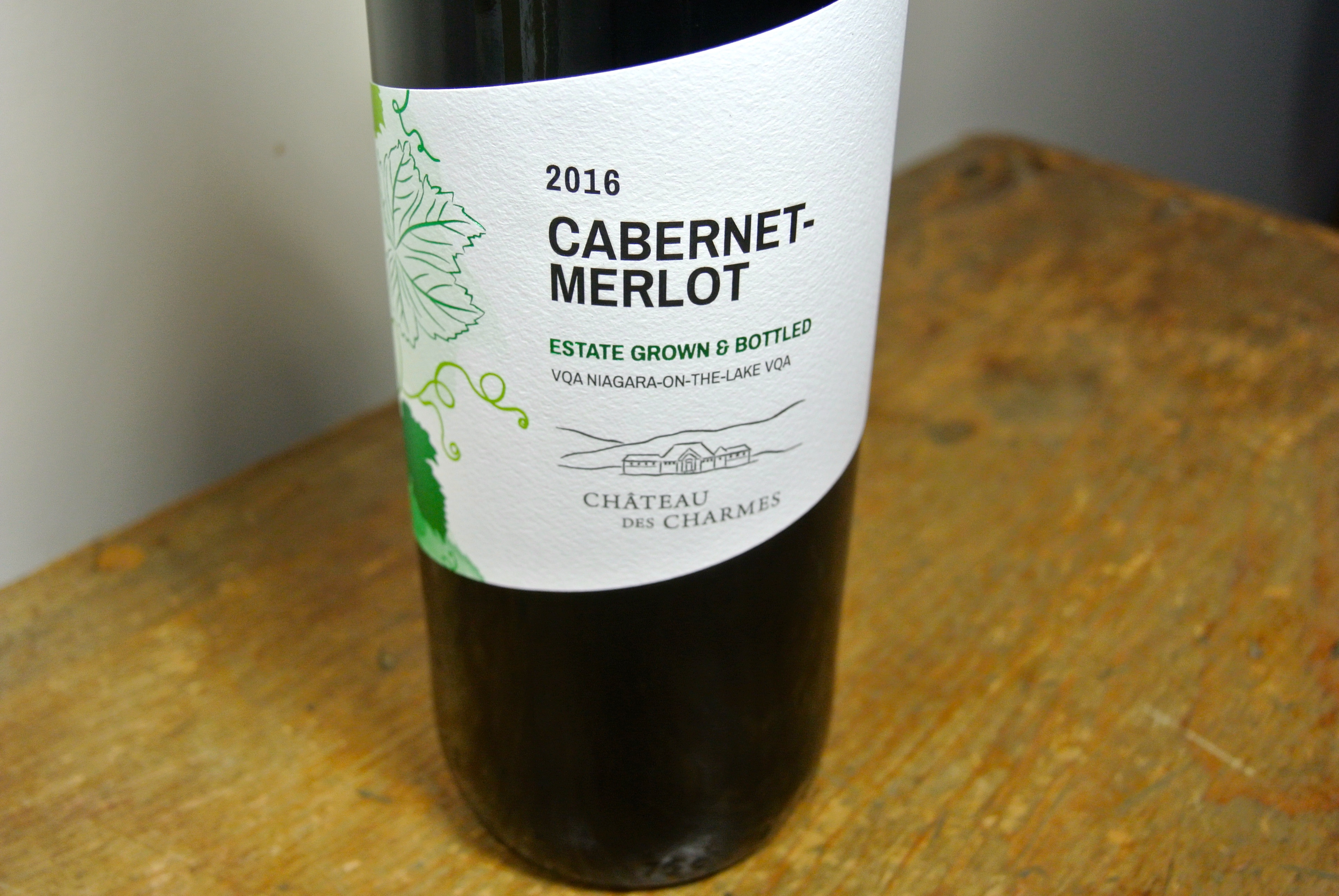
Chateau des Charmes Cabernet-Merlot 2016 ($16, coming to Vintages stores, in grocery stores, 90 points) — This is a real bargain for such a beautiful wine. It’s a blend of Cabernet Franc, Cabernet Sauvignon (both 40%), and the rest Merlot from the fabulous 2016 vintage for Bordeaux varieties. The grapes are a combination of all four of the estate’s farms and declassified from the single vineyard bottlings. It has an explosive nose of black cherries, raspberries, bramble, currants and light spice. It’s medium bodied on the palate but still has the stuffing to cellar for 3+ years. It features a range of ripe red fruits, touch of anise, well integrated spice and pretty decent tannic structure through a long(ish) finish. Stock up on this well priced red.
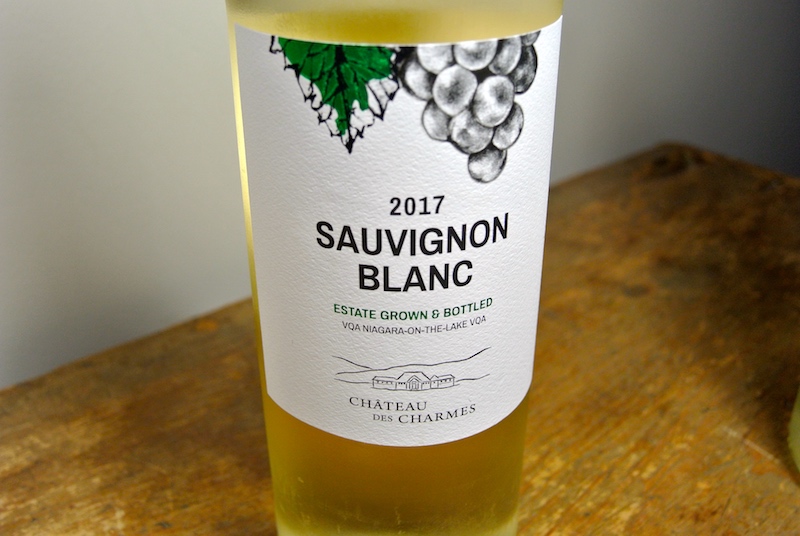
Chateau des Charmes Sauvignon Blanc 2017 ($16, LCBO, grocery, winery, 88 points) — A balanced array of citrus, gooseberry and grassy/herb notes on the nose. It’s fresh and vibrant on the palate with fresh-cut lime, citrus and gooseberry notes that all lead to a mouth-watering finish.
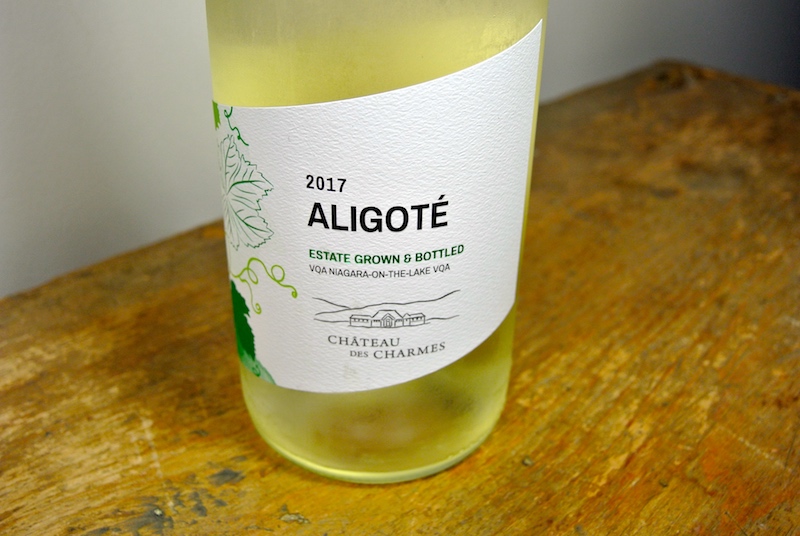
Chateau des Charmes Aligoté 2017 ($16, 89 points) — This estate has been growing Aligoté since 1978 (I do not know of another winery with this grape planted in Ontario). It’s so different and interesting and a nice twist on a summer wine. The nose shows vivid quince notes, sea shells, citrus and apple notes. It’s racy/zippy on the palate with refreshing notes of pear, melon, apple and saline minerality through a crisp finish. Bring on the sea food!
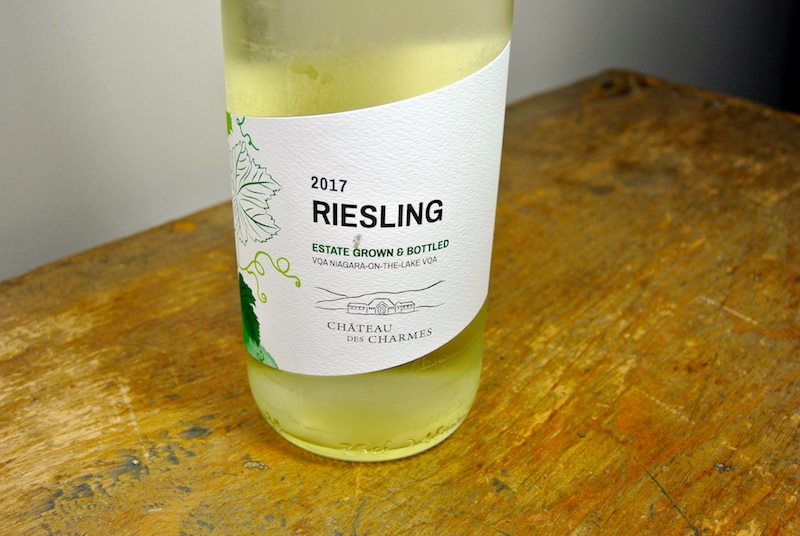
Chateau des Charmes Riesling 2017 ($15, 88 points) — This is a new take on Riesling from Chateau des Charmes, a little sweeter than other Rieslings made at the estate. It shows an intense nose of lime, apple, white peach and a subtle note of ginger. It’s off-dry on the palate with plenty of citrus and orchard fruits with a touch of honey and just enough acidity to balance it all out. Good sipping Riesling.
Three from Rosehall Run
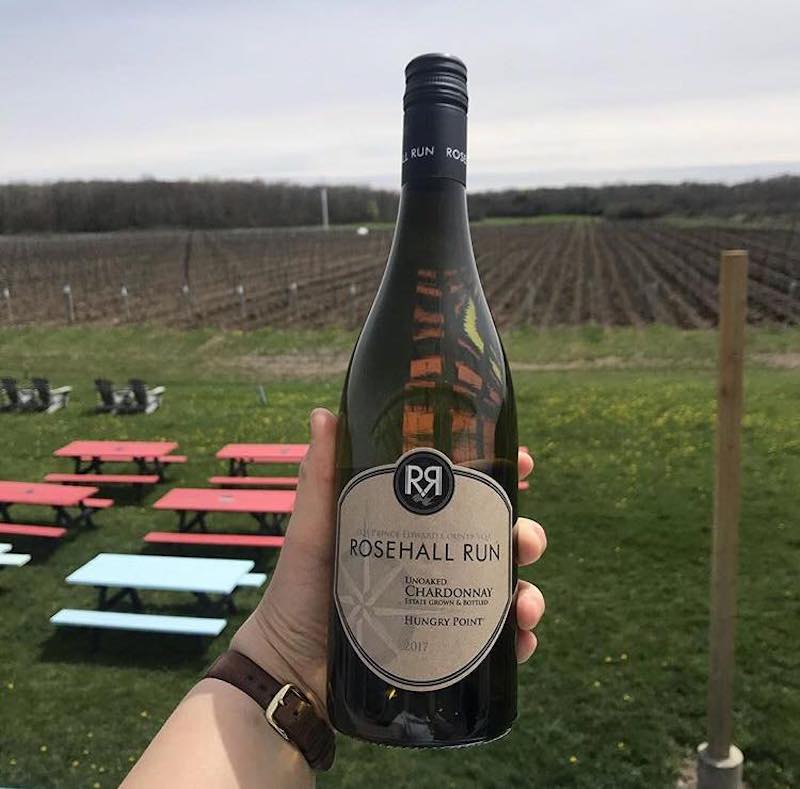
Note: Reviews are by Michael Lowe for these Rosehall wines from Prince Edward County
Rosehall Run Hungry Point Pinot Noir 2017 ($25, 89 points) — A lean, taut Pinot at first, opening up to notes of cherry and cranberry with dried floral undertones. It’s a lighter pinot stylistically and, like the soil the vines are planted in, there is a distinctive mineral core supporting the fruit. Fresh acidity and fine-grained tannins balance the whole.
Rosehall Run Hungry Point Pinot Gris 2017 ($25, 87 points) — The nose expresses aromas of honeysuckle flowers, green apple and pear. On the palate its crisp acidity carries the delicate fruit finishing with lingering minerality. A versatile food wine which should match well with spicy dishes, fresh herbs or grilled shellfish.
Rosehall Run Hungry Point Unoaked Chardonnay 2017 ($20, 88 points) — A nose of lemony pear and apple, and a slight yeasty note, follows on to the palate. This dry white has racy acidity, a touch of tart apple mid-palate and a precise mineral finish — a perfect summer sipper!
Pommies’ new Red Sangria
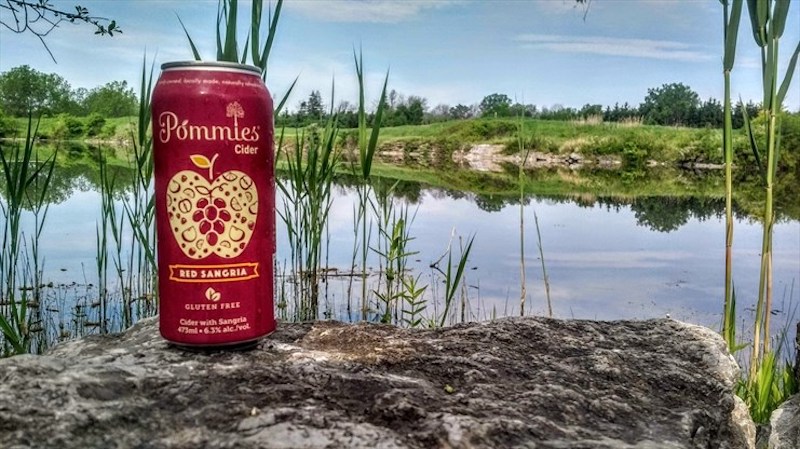
Pommies Red Sangria ($3.50 for 473 mL can, 91 points) — Another delicious cider in the arsenal of Pommies Cider that blends Ontario apples and wine with citrus and berries. From the get-go, it’s super carbonated in the glass and reveals a riot of red apple, red berries, cherries and a splash of lemon-lime on the nose. It’s all about super ripe red berries on the palate, good spritz, a hint of sweetness and balancing citrus on the finish. A perfect summer berry treat.








Comment here